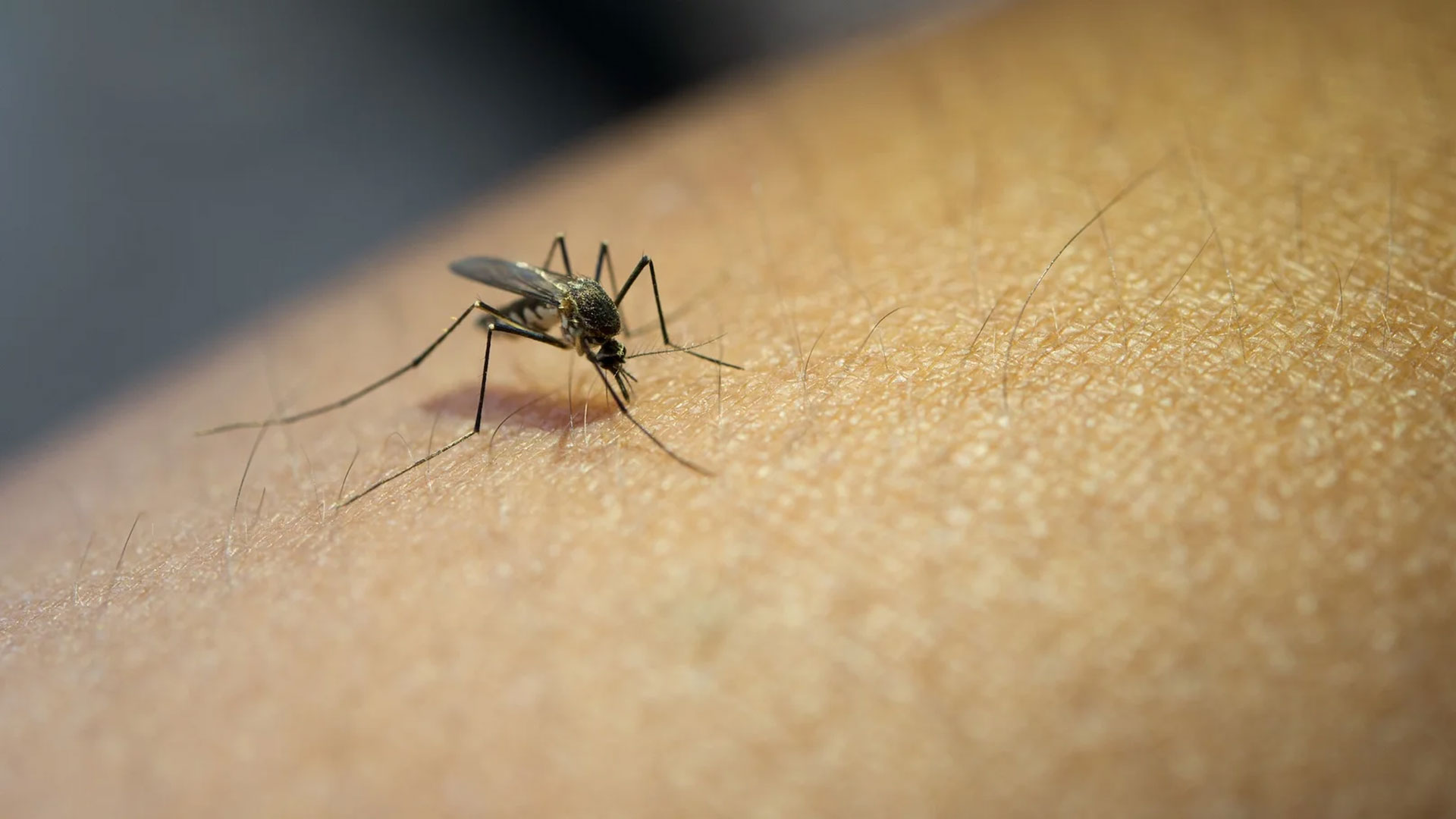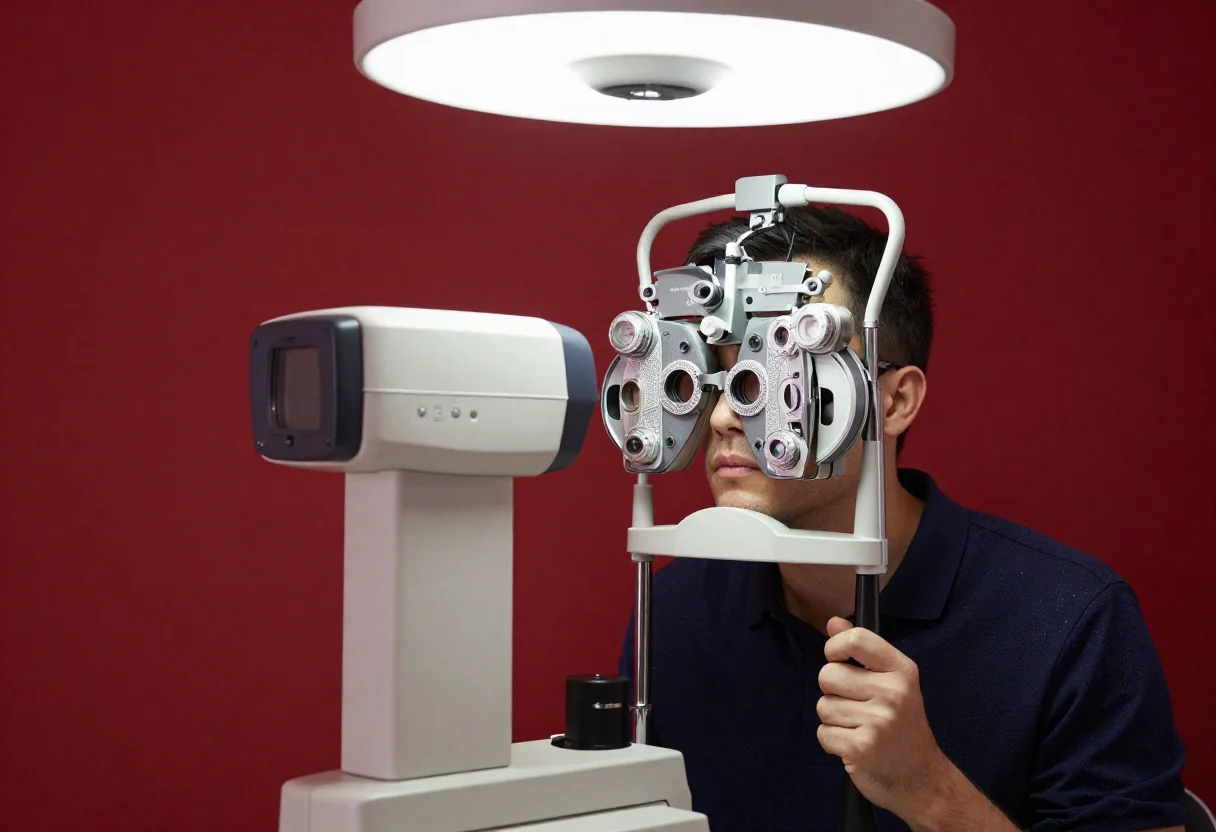In today's world, where we are all living under intense information overload, distraction, and forgetfulness, there are numerous significant errors that are common.
After a nice dinner and a pleasant conversation with your friends, the moment when you swallow a peanut in a wonderful tart that arrives on the table escapes your attention and you soon realize that something is wrong. You know you are allergic to peanuts, but it's too late, what do you do now?
You can overcome this situation by immediately explaining the situation to the people at the table and using the nasal epinephrine spray in your bag.
Yes, you heard right, a rescue medication for anaphylaxis that is both more practical to carry and administer than the current options may soon be available.
Anaphylaxis was first used in 1902 by Prof. Charles Robert Richet, Nobel Prize winner in Medicine and Physiology, and Dr. Portier to describe a series of symptoms that were the opposite of immunity. Initially called “aphylaxis”, this clinical picture was later changed to “anaphylaxis”. Its etymology is of Greek origin and comes from the words “ana” meaning “against” and “phylaxis” meaning “protection”.
Since Paul Portier and Charles Richet described their landmark findings of severe fatal reactions in dogs re-exposed to the poison after inoculation with sea anemone venom, the treatment of anaphylaxis has continued to evolve.
Anaphylaxis can be defined as an acute and widespread form of shock that develops within minutes of exposure to an antigen in susceptible individuals and is at the severe end of the spectrum of acute allergic reactions. It can be fatal if not treated promptly and effectively.
Anaphylaxis is possible when any of the three criteria occur;
The first criterion is involvement of the skin, mucosal tissues, or both, accompanied by at least one of the symptoms of respiratory failure or decreased blood pressure or associated end-organ dysfunction.
The second criterion is the presence of two or more symptoms that occur rapidly in the patient within minutes to several hours after exposure to a possible allergen. These symptoms include skin or mucosal tissue involvement (e.g., widespread hives, pruritus-fever, swollen lips-tongue-uvula), respiratory failure (e.g., dyspnea, wheezing-bronchospasm, stridor, hypoxemia), decreased blood pressure or associated symptoms of end-organ dysfunction (e.g., collapse, syncope, incontinence), and prolonged gastrointestinal symptoms (e.g., cramping abdominal pain, vomiting).
The third criterion is a decrease in blood pressure within minutes to several hours after exposure to a known allergen. For infants and children, this is defined as a low systolic blood pressure (age-specific or greater than 30% decrease in systolic blood pressure), while for adults it is defined as a systolic blood pressure of less than 90 mm Hg or greater than 30% decrease from baseline.
The true incidence of anaphylaxis in the general population remains unknown. Estimates based on incidence in the community are complicated by low rates of diagnosis and incomplete documentation, incorrect coding practice, conflation of different case definitions and ways of measuring incidence. However, anaphylaxis is not an uncommon phenomenon and its incidence is increasing, particularly in childhood and early adulthood.
Allergic reactions account for approximately 1% of annual emergency department visits. Studies have demonstrated that up to 57% of anaphylactic reactions remain unrecognized, and epinephrine, the first-line treatment for anaphylaxis, is not administered in up to 80% of cases. It is estimated that around 1 in 1,333 people in the UK experience anaphylaxis at some point in their lives. This figure may be an underestimate, although there are approximately 20 anaphylaxis deaths reported in the UK each year. In Europe, approximately 3 in 1000 people in the general population will experience anaphylaxis in their lifetime. In the UK, 10-20 deaths due to anaphylaxis are reported each year.
Severe food allergies are more prevalent in children than in adults. Anaphylaxis to radiocontrast media, insect stings, and anesthetics has been documented to occur more frequently in adults than in children. The underlying cause of this discrepancy is unclear, with potential explanations including differences in frequency of exposure and increased sensitization. Drug exposure and subsequent reactions are more prevalent in industrialized areas.
The prevalence of adverse reactions to insects and other poisonous plants and animals is more common in tropical regions due to their greater biodiversity. Anaphylaxis attacks were more frequent between July and September, and this difference can be attributed to insect stings.
The symptoms of anaphylaxis affect various organ systems, including the skin (80-90% of attacks), respiratory tract (70% of attacks), gastrointestinal tract (30-45% of attacks), cardiovascular system (10-45% of attacks), and central nervous system (10-15% of attacks). The most common symptom is urticaria.
While itchy palms, feet, or head may indicate the development of anaphylaxis, it is important to be aware that anaphylaxis can occur without any skin symptoms. The most concerning development for children is bronchospasm. If there are any signs that the airway has been affected (such as swelling of the larynx, stridor, difficulty speaking, and shortness of breath), medical professionals must be alert to the seriousness of the problem.
Approximately 80-90% of patients with anaphylaxis will present with cutaneous features, including urticaria, rash, pruritus, flushing, and/or angioedema. The most important clinical finding is urticaria. Hives can occur at any anatomical site, but are more common in areas with less dermal thickness, such as the palms, soles of the feet, or mid-thighs. All areas of the skin can be affected, although anaphylaxis can occur without a rash. In approximately 20% of children, anaphylaxis occurs without any skin symptoms.
Approximately 70% of allergic reactions affect the respiratory tract. Severe labiolingual angioedema can result in airway obstruction. Patients may experience swelling of the mouth, throat, or tongue, which can lead to respiratory distress and swallowing difficulties. Patients may also exhibit hoarseness or wheezing. Facial swelling indicates that the airway may soon be affected.
Increased vascular permeability, vasodilation and myocardial dysfunction can lead to hypotension and cardiovascular collapse. Adults are more likely to have cardiovascular symptoms than children.
Confusion, which may manifest as disorientation or aggression, may be a consequence of hypoperfusion +/- hypoxia.
Gastrointestinal effects, such as nausea, vomiting, diarrhea with abdominal cramps, may also be associated with anaphylaxis. However, these are often overshadowed by more immediate life-threatening symptoms, such as breathing difficulties. In the Memphis study, the rates of dyspnea, fainting, and diarrhea/cramping were 59%, 33%, and 29%, respectively.
The three main immunologic triggers of anaphylaxis are foods, insect stings, and drugs. However, the relative contribution of each of these to anaphylaxis may vary according to the study design, study population, or geographical region.
The most likely cause of anaphylaxis in children, adolescents, and young adults is an IgE-mediated allergic reaction to food, while anaphylaxis attacks in middle-aged and older adults are more likely to be caused by insect venom or drugs.
Insect stings, particularly those from Hymenoptera, can result in anaphylactic reactions. It is estimated that up to 3% of the UK population may experience anaphylactic reactions to insect stings from the Hymenoptera order, which includes wasps, bees, and ants.
Drugs can cause anaphylaxis through IgE mediated or direct mast cell stimulation. Among the causes of anaphylaxis due to IgE-related mechanisms revealed by research, penicillin and anesthetic agents are particularly prominent. Drug-induced anaphylaxis is more common in middle-aged and elderly people, with the highest risk in the 55-84 age group. The route and rate of administration affect the risk of anaphylaxis; oral administration is less risky, whereas intravenous or intramuscular administration is more risky. New triggers include loperamide, heparin, folic acid, herbal medicines and some vitamin or dietary supplements. Radiologic contrast agents, dyes and some biological drugs (monoclonal antibodies) can also cause anaphylaxis. Vaccines rarely cause anaphylaxis and are usually related to their excipients (gelatin, egg, dextran).
The campaign to prevent anaphylaxis due to natural rubber latex has achieved some success in health settings. However, reports of anaphylaxis in the community due to exposure to products such as latex gloves, condoms, racket grips, balloons, sandboxes, baby dummies, and bottle nipples continue. Reactions can occur through contact, parenteral contamination, or aerosol transmission. Those employed in the health, beauty, food, and motor industries are at a higher risk.
Exercise-induced anaphylaxis (EIA) presents with urticaria, airway constriction and circulatory collapse and occurs only after exercise. It is more common in young people and is usually food related. In 50% of cases, it is associated with food, aspirin or NSAID use. Food-induced EIA occurs when exercise is performed 2-4 hours after ingestion of a specific food. Exercise can trigger anaphylaxis or worsen anaphylaxis caused by food and drugs.
One-third to one-half of anaphylaxis cases presenting to emergency departments are food-induced. The highest incidence is observed in young children, with food allergens involved in 33-56% of overall cases and up to 81% of pediatric cases.
Eight foods - cow's milk, eggs, soy, wheat, shellfish, fish, peanuts and tree nuts - are responsible for 90% of food allergies.
Some childhood allergies tend to resolve in adulthood, such as those to cow's milk, egg, soy, and wheat. In contrast, others are less likely to do so, including allergies to peanuts, fish, shellfish, and tree nuts. It is important to note that geographical regions can exhibit differences in prevalence, with some countries experiencing a higher incidence of certain allergies than others. For instance, sesame allergy is relatively uncommon in the United States, but remains a significant allergen in Israel and other parts of the world.
Peanuts and tree nuts account for the majority of severe allergic reactions. In the case of peanut allergy, ingestion of an amount measured in micrograms is sufficient for a reaction. However, fish and shellfish are also reported to cause severe allergic reactions, especially in Asia and parts of Europe.
The severity of an allergic reaction to a food depends on the amount of food ingested, whether it is cooked, raw or processed, and whether other foods are consumed at the same time. The severity of the reaction is also influenced by the individual's age, level of sensitization, postprandial diet or exercise, and the presence of comorbidities such as allergic dermatitis, asthma, or severe hay fever. For some patients, simply touching the food can trigger a severe reaction.
Physiologically, the anaphylactic cascade triggers contraction of airway and gastrointestinal smooth muscle, dilation of blood vessels, increased endothelial permeability, and stimulation of sensory nerve endings. It is the presence of additional mucus with airway edema and increased bronchial smooth muscle tone that explains the symptomatic phenomenology of anaphylaxis.
Loss of circulating volume, vasodilation, and problems with heart muscle function can lead to low blood pressure, arrhythmias, loss of consciousness, and shock. In a period of 10 minutes, 35% of the circulating volume can leave the blood vessels.
Anaphylaxis literally refers to an immunological reaction mediated by IgE and, to a lesser extent, IgG and IgM (Coombs and Gell type 3 reactions). Anaphylactoid (pseudoallergic) is a term used for cases that have a similar clinical profile but are not due to antibody formation.
Anaphylactic reactions trigger compensatory mechanisms such as neuroepinephrine release and activation of the renin-angiotensin-aldosterone system. However, these mechanisms can also have negative effects. Mast cells can release renin, which can lead to cardiac arrhythmias. Regardless of the trigger of anaphylaxis, mast cells release inflammatory mediators such as histamine, prostaglandins, and leukotrienes. These mediators cause bronchoconstriction, vasodilation, increased vascular permeability, and attenuation of myocardial contractility. The effects are rapid with intravenous drug administration, delayed with poison exposure, and slower with ingested food allergens. Histamine dilates blood vessels and increases heart rate and contractility. Prostaglandin D2 constricts bronchi and dilates peripheral vessels. Leukotrienes constrict the bronchi and increase vascular permeability.
A biphasic reaction is defined as a reaction within 48 hours of a previous reaction that meets the criteria for anaphylaxis and resolves completely without re-exposure to the antigen.
The risk of developing a biphasic reaction has been reported to be as high as 20%, but prospective studies report a prevalence closer to 1% to 7%. The classic teaching is to observe anaphylaxis patients for 4 to 6 hours after successful treatment of an anaphylactic reaction to monitor for biphasic reactions. However, studies have shown that the time from initial to biphasic reaction can vary from 1 to 48 hours, with an average of 8 to 10 hours.
Up to 25% of adult patients (10% of children) will have a biphasic reaction as part of their anaphylaxis episode. Severe reactions, predominant hypotension, oral triggers and a history of asthma have been associated with an increased risk of biphasic reactions.
Certain chronic health conditions increase the likelihood of severe or fatal anaphylaxis. People with asthma, cardiovascular disease, mastocytosis (abnormal accumulation of mast cells in the skin, bone marrow, and internal organs), and substance abuse have an increased risk of anaphylaxis.
The risk of at least three organ systems being affected is more than doubled in patients taking ACE inhibitors, beta-blockers, diuretics, or antihypertensives in general. People with insect venom allergy are known to have more severe anaphylactic reactions to insect venom if they are taking ACE inhibitors at the time of the reaction. Beta-blockers may have a similar effect. Other drugs that may have a similar effect include aspirin and NSAIDs. The risk of death from anaphylaxis is higher in elderly patients for several reasons, including the presence of comorbidities, particularly COPD and cardiovascular disease, and the use of medications such as beta-blockers.
Most patients show symptoms within the first 5-30 minutes after exposure to the allergen, but this may be delayed, especially if the allergen was ingested by mouth.
More than 95% of patients with allergic and anaphylactic reactions do well with initial treatment and do not require hospitalization. The clinical presentation and severity of anaphylaxis depends on the degree of sensitization of the patient as well as other factors present at the time of exposure: infection, exercise, emotional stress, and the use of other medications such as beta-adrenergic receptor antagonists.
Of those who present with anaphylaxis, 20% have a second episode and 5% have a third episode. The median duration of presentation with a second episode is 395 days. Accidental ingestion of peanuts/tree nuts is the most common trigger associated with relapses. Relapses are more common in women and are not necessarily associated with a history of atopy.
The main mechanism leading to death in anaphylaxis is circulatory or respiratory arrest. Although the mortality rate is low (<1%), the number of emergency room visits and hospitalizations for allergic reactions has increased in recent years. Between 500 and 1000 fatal anaphylactic reactions have been reported annually in the United States.
Death usually occurs within the first hour of anaphylaxis. In Australia, Turkey, Korea and Shanghai, drugs are the main cause of fatal anaphylaxis, whereas in the United Kingdom and the United States, food allergy (especially nuts) is reported to be the main cause. These differences may be due to different environmental and/or dietary exposures and different data collection methods.
Risk factors for deaths from food-induced anaphylaxis included age 10-35 years, active asthma, peanut allergy, consumption of food prepared outside the place of residence, and delayed administration of epinephrine. Risk factors for drug-induced anaphylaxis deaths include age 55-85 years, presence of respiratory or cardiovascular comorbidities, and use of antibiotics or anesthetics. Risk factors for anaphylaxis deaths due to insect stings include age 35-84 years and male sex. Upright posture was generally associated with death from anaphylaxis.
The treatment of anaphylaxis always begins with epinephrine. In this life-threatening condition, the immediate benefits of epinephrine outweigh the potential risks of administration. Epinephrine increases peripheral vascular resistance and cardiac output, stabilizes mast cells, and reverses bronchoconstriction and mucosal edema, thereby reversing many of the life-threatening symptoms of anaphylaxis.
The initial assessment should prioritize the ABCs (airway, breathing, circulation) and level of consciousness. A physical examination should focus on the presence or absence of angioedema of the oropharynx, lips, and tongue. The patient should be asked to speak (e.g., say their name) to assess for epiglottitis. A skin examination should be performed for urticaria and angioedema. If these are found, this supports the diagnosis of anaphylaxis.
In the absence of edema in the upper airway, patients should be tilted to ensure adequate circulation to essential organs. Pregnant women should lie on their left side to avoid obstruction of venous return by uterine contents. Lying down helps to reduce the effects of developing hypotension and impaired cardiac venous return. Patients with severe respiratory distress or vomiting may not be able to cope with supine positioning and should be placed in a comfortable position with feet elevated if possible.
Following the administration of epinephrine, all patients should be transported to a medical facility, given the potential for biphasic reactions and the associated need for additional treatment. It is imperative that airway, respiration, and circulation be continuously monitored with continuous pulse oximetry and potentially arterial blood gas measurements. Supplemental oxygen should be administered to any patient with respiratory distress or hypoxia. An inhaled beta2-agonist may be beneficial for patients with respiratory distress. In the event of a severe or refractory reaction, intubation and mechanical ventilation may be necessary. Patients with poor circulation, hypotension, or anaphylactic shock should receive aggressive fluid resuscitation.
H1 and H2 antagonists are considered second-line treatment for anaphylaxis. While corticosteroids have never been shown in placebo-controlled trials to affect the course of anaphylaxis or prevent biphasic reactions, they may be used to treat related diseases such as asthma and allergic rhinitis and have been included in anaphylaxis management algorithms. In the case of severe anaphylaxis in patients on beta-blockers, the effect of epinephrine may be reduced, and glucagon may be employed in this situation, especially if there are signs of hypotension.
Epinephrine has the ability to affect the pathophysiological mechanisms of anaphylaxis more than any other agent. It inhibits mast cell degranulation, prevents or improves upper and lower airway constriction, and reverses circulatory arrest. The earlier it is given, the better and faster the response appears to be. This is probably because the release of inflammatory mediators is inhibited, therefore reducing the severity of the episode.
The intramuscular (IM) route is the preferred method for epinephrine administration over the subcutaneous route. A small prospective crossover study in healthy men demonstrated that the IM route resulted in faster administration and higher peak plasma concentrations.
Adrenaline for intramuscular use is available in a concentration of 1 mg/mL, corresponding to a dilution of 1:1000. The recommended dose is 0.01 mg/kg (with a maximum dose of 0.5 mg administered intramuscularly), with repeat doses administered every 5-15 minutes until the symptoms are controlled.
It is recommended that intramuscular injections of adrenaline be administered in the anterolateral aspect of the middle third of the outer thigh. It is important to note that IM epinephrine should always be administered in the anterolateral thigh, as this results in higher peak plasma levels compared to deltoid administration. Furthermore, it has been demonstrated that IM epinephrine administered through the thigh reaches maximum peak plasma concentrations within 10 minutes. There are no absolute contraindications to the administration of an adrenaline auto-injector during an allergic emergency.
In any age group, small doses of adrenaline produce a mild and transient feeling of anxiety, unease, and can lead to headaches, feelings of instability, palpitations, pallor, and tremors. This is the same picture that occurs during the "fight or flight" response, when there is an endogenous release of adrenaline caused by a frightening or life-threatening situation.
In rare instances, adrenaline can precipitate ventricular dysrhythmia, angina pectoris, myocardial necrosis, pulmonary edema, spikes in blood pressure, and even intracranial hemorrhage. Nevertheless, anaphylaxis can also induce angina pectoris, myocardial necrosis, and cardiac rhythmic abnormalities in the absence of exogenous adrenaline administration.
The majority of serious side effects are associated with the intravenous bolus administration of adrenaline, particularly when the dosage is excessive.
For children prescribed adrenaline auto-injectors, it is of critical importance to ensure that the correct product is dispensed and that the dosage is based on the weight of the child according to the manufacturer's marketing authorization. The British National Formulary for Children states that the lower weight band dose for a small-strength auto-injector is 15 kg. However, for infants weighing less than 15 kg and at risk of anaphylaxis due to accidental exposure, experts recommend the junior strength auto-injector (150 micrograms of adrenaline) from six months of age. For infants younger than this, it should be possible to avoid known triggers due to limited diet and environmental allergen exposure.
For infants and young children weighing less than 15 kg, a precisely calculated dose based on their body weight is the preferred approach. However, in instances where this calculation may result in a delay in the treatment of a child experiencing a rapidly worsening attack, an auto-injector containing 0.15 mg can be utilized. This typically results in only short-term and mild symptoms.
Dosages by weight:
- 0.15 mg for children between 15 and 29 kg,
- 0.3 mg for patients between 30 and 50 kg,
- For patients over 50 kg, 0.5 mg can be given. Use a 1.5-inch needle to inject into muscle in obese patients.
In the treatment of anaphylaxis, intravenous (IV) epinephrine may be used in refractory cases, but should only be administered by experienced personnel. If IV epinephrine is given, a gradual infusion should be preferred. The use of IV epinephrine is risky and may result in harmful side effects if incorrectly dosed or misdiagnosed. Patients should be closely monitored for adverse events. This risk is particularly high in older adults and patients taking beta-blockers. Children should not receive bolus doses of intravenous epinephrine.
Emergency department observation time is generally considered to be 4 to 6 hours, but this is not considered evidence-based. Some studies suggest that patients may be discharged in as little as 1 hour after complete resolution of symptoms. The observation period should be individualized for each patient.
Patients with mild to moderate allergic, non-anaphylactic reactions without airway involvement may be safely discharged home. If symptoms persist or are severe, a 3- to 5-day course of oral antihistamines and/or corticosteroids may be useful for symptom control. Patients with unknown triggers should be referred to an allergist for testing.
Patients with symptoms of mild to moderate anaphylaxis that persist despite treatment, require multiple doses of epinephrine, have a biphasic pattern, or have high-risk features should be kept under prolonged observation or hospitalized because they are at increased risk for decompensation. Upon discharge from observation or hospitalization, these patients should be prescribed an epinephrine autoinjector and referred to an allergist.
The first epinephrine auto-injector was introduced to the market in 1987. Currently, vials and syringes or auto-injectors remain the only available option for the treatment of anaphylaxis.
Although epinephrine auto-injectors (EAIs) are safe and effective in the treatment of anaphylaxis, they are often considered inconvenient and cumbersome. In a survey of patients and caregivers, 83% of respondents stated that they do not administer or delay the use of EAIs, even when they know a severe allergic reaction is occurring. Barriers to the use of EAIs include high costs, reluctance to carry the device, failure to recognize a serious allergic reaction, fear of needles, and lack of appropriate training. There is an unmet need to provide an additional needle-free epinephrine delivery option for first-line treatment of allergic reactions/anaphylaxis.
Neffy® (epinephrine) is an intranasal formulation of epinephrine being developed for the treatment of allergic reactions (type 1), including anaphylaxis, in adults and children ≥30 kg. It is needle-free and easy to administer. If approved, it would be the first non-injectable treatment available for people with type 1 allergies.
The company's research has shown that people are more likely to use the nasal spray 18 minutes earlier than injectable epinephrine, and up to 35 percent more people will carry a nasal spray.
Neffy contains 2 mg of epinephrine per dose, while the Epipen auto-injector contains 0.3 mg per dose and the Epipen Junior auto-injector contains 0.15 mg per dose. Neffy provides a higher dose than Epipen because it is administered through the nose rather than by injection, so a higher dose is required to achieve the same efficacy.
Neffy was well tolerated in clinical trials and side effects were mild (mild nasal irritation, stinging or pain).
Neffy is expected to receive FDA approval in the last quarter of 2024.
We are optimistic about continued advances in scientific research and development of anaphylaxis treatments, including needle-free nasal sprays such as neffy® and sublingual (under the tongue) administration, which offer people additional treatment options. These are smaller alternatives for those who do not wish to use or carry an autoinjector.
A patient who has experienced anaphylaxis once is at a higher risk of experiencing it again. In terms of trigger avoidance and anaphylaxis attack management, both verbal and written information provided at the time of the attack and repeated later at healthcare follow-up visits is vital. Patients and caregivers should be encouraged to obtain medical alert bracelets and cards. A personalized written action plan should be prepared.
In the case of food-induced anaphylaxis, the primary treatment is to avoid the identified food. Patients, families, and caregivers should be educated to read food labels carefully when preparing meals and to assess the safety of food purchased from restaurants. This education should include information about cross-contamination of foods during preparation, such as cutting boards or mixing bowls.
Subcutaneous venom immunotherapy can protect 90% of adults and 98% of children from further insect venom-related anaphylaxis. It is also important for patients with insect venom allergy to be aware of how to avoid the trigger. Patients should be advised to avoid perfumes or perfumed toiletries, especially those with floral scents, as they can attract Hymenoptera species. Brightly colored clothing can also attract bees or other pollinator species. It is advisable that individuals with a history of insect venom allergy avoid contact with hives and nests, and refrain from using any equipment that might disturb a nest. Those who are allergic to Hymenoptera stings and who are required to work outdoors should always carry an auto-injector.
In 2017, the MHRA issued guidance stating that individuals at risk of anaphylaxis should carry two adrenaline auto-injectors at all times. This recommendation was made due to the potential risks associated with the administration of the drug, including uncertainties about the location of drug delivery and the speed of adrenaline action in the body, as well as the risk of misuse of the device or malfunction.
In addition to having access to an auto-injector of adrenaline on the way to and from school, children may require additional auto-injectors for use in an emergency during school hours. Therefore, it is recommended that an auto-injector be kept on school premises throughout the academic term.
Extreme temperatures can decrease the efficacy of adrenaline, therefore it is essential that auto-injectors are stored in conformity with the summary of product specifications. For instance, it is inadvisable to refrigerate or freeze an auto-injector. Furthermore, it is vital to regularly inspect the expiration date, as the shelf life may vary between brands.
Anaphylaxis is usually fatal' - Anaphylaxis is life-threatening, but death is rare.
Epinephrine is dangerous' - epinephrine injected into the outer middle muscle of the thigh is a safe and effective treatment for anaphylaxis.
There's no rash, hives or swelling, so it can't be anaphylaxis' - Up to 10% of anaphylaxis cases have no skin symptoms.
Your next reaction will be more severe - Symptoms are not more severe in subsequent reactions.
Anaphylaxis to one trigger (e.g. food) automatically means that reactions to another trigger (e.g. another food) will also be anaphylaxis - this is not true, people can have mild reactions to some triggers and more severe reactions to others.
1. Abou Daya, M., & Du Toit, G. Anaphylaxis: symptoms, causes and diagnosis. Pharm J, 305(7940). (2020).
2. ASCIA. ASCIA Guidelines - Adrenaline (Epinephrine) Injector Prescription. (2023)
3. Boden, S. R., & Wesley Burks, A. Anaphylaxis: a history with emphasis on food allergy. Immunological reviews, 242(1). (2011).
4. Casale, T. B., Ellis, A. K., Nowak-Wegrzyn, A., Kaliner, M., Lowenthal, R., & Tanimoto, S. Pharmacokinetics/pharmacodynamics of epinephrine after single and repeat administration of neffy, EpiPen, and manual intramuscular injection. Journal of Allergy and Clinical Immunology, 152(6), 1587-1596. (2023).
5. Cingi, C., & Muluk, N. B. Quick Guide to Anaphylaxis. Springer Cham. (2020).
6. Epinephrine. Oregon Health & Science University. (2023).
7. Furse, R. Clinical Pathways in Emergency Medicine (S. S. David, Ed.). Springer New Delhi. (2016).
8. Halsey, G. ARS Pharma Submits Response to FDA Complete Response Letter for neffy (epinephrine nasal spray). Patient Care [Online], NA. (2024).
9. Higgins, T., Arastu, A. S., & Auerbach, P. S. Medicine for the Outdoors E-Book: The Essential Guide to First Aid and Medical Emergencies. Elsevier Health Sciences. (2022).
10. Lee, B., Gauld, R., & Kim, H. The risk of severe adverse reactions to neffy intranasal epinephrine spray. Journal of Allergy and Clinical Immunology, 153(2), 535-536. (2024).
11. Murphy, A., Johnson, D., & Rajyaguru, B. R. Anaphylaxis: management. Pharm J, 305(7940). (2020).
12. Mustafa, S. S. Anaphylaxis. Medscape (2024).
13. Withdrawal of application for the marketing authorisation of Neffy (adrenaline). European Medicines Agency. (2022)
14. Wyatt, J. P., Taylor, R. G., de Wit, K., & Hotton, E. J. Oxford handbook of emergency medicine. Oxford University Press, USA. (2020).
15. Zeke, A., & Sudhir, A. Management of allergic reactions and anaphylaxis in the emergency department. Emergency Medicine Practice, 24(7), 1-24. (2022).















